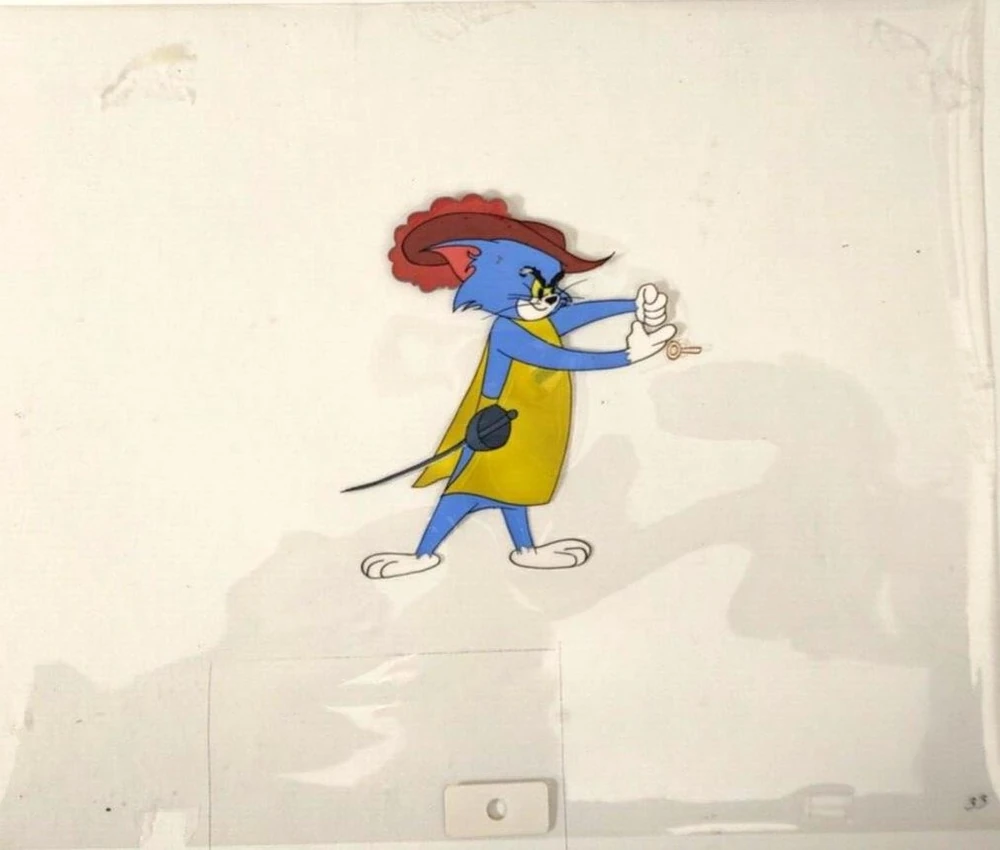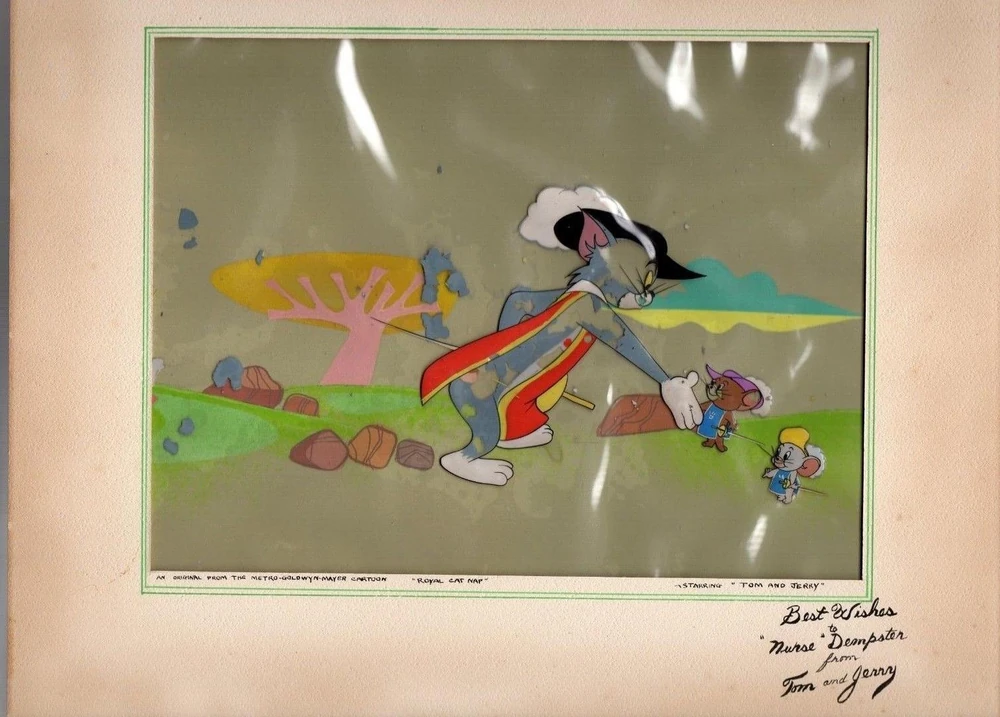
This short film may be the only theatrical cartoon short to place Tom and Jerry into the story of Robin Hood. However, it was not the only time Tom and Jerry would be place in this story. There would much later be a direct to video movie entitled Tom and Jerry: Robin Hood and his Merry Mouse (2012). In an episode of TV's The Tom and Jerry Show entitled Robin Ho Ho (1975), the duo would try to join Robin Ho Ho's merry men.
In this short film, Robin Hood has been captured, and Jerry and Nibbles try to rescue him. However first they have to get past Tom, who is guarding Tom.
Once again, this cartoon is more charming than actually funny. In fact, the only major fault of this cartoon is that there is not a single real laugh here. That does not make this a bad short though. There is quite a bit to still enjoy about this cartoon though. The storyline makes it feel very unique among Tom and Jerry films. The same can be said about the setting. The setting allows the artists to get away from the typical suburban settings seen in the Tom and Jerry shorts of this time. The artists take full advantage of it. The backgrounds are especially lovely to look at, helping make this an incredibly visually pleasing short. The more realistic action scene towards the end is also very well handled and visually delightful. This is probably one of the most handsome looking Tom and Jerry cartoons of this era. Also helping is that Scott Bradley's music is as wonderful as ever.
This film marked the final theatrical short to feature the character of Nibbles (or Tuffy if you prefer). However, the little grey mouse would go on to appear in many revivals of Tom and Jerry. He would appear in episodes of such TV shows as The Tom and Jerry Comedy Show, Tom & Jerry Kids Show, Tom and Jerry Tales, The Tom and Jerry Show (the 2014-2021 version), Tom and Jerry in New York and even the anime Tom and Jerry Gokko as well as such direct to video feature length movies as Tom and Jerry: The Magic Ring (2001), Tom and Jerry: A Nutcracker Tale (2007), Tom and Jerry Meet Sherlock Holmes (2010), Tom and Jerry and the Wizard of Oz (2011), Tom and Jerry's Giant Adventure (2013), Tom and Jerry: Back to Oz (2016), Tom and Jerry: Willy Wonka and the Chocolate Factory (2017), Tom and Jerry: Cowboy Up! (2022) and Tom and Jerry: Snowman's Land (2022).
The cartoon was submitted for an Academy Award but ended up not being nominated. There were only three cartoons nominated for the Award in 1958. These were Paul Bunion (1958, Disney), Sidney's Family Tree (1958, Terry Toons) and Knighty Knight Bugs (1958, Warner Brothers). The winner was Knighty Knight Bugs, which marked the only time Bugs Bunny ever won an Oscar. You can watch him win below.
The credit animators on this film include Kenneth Muse, Lewis Marshall, Carlo Vinci and James Escalante. The credited background artist is Robert Gentle, and the credited layout artist is Richard Bickenbach. Richard Bickenbach not only worked on William Hanna and Joseph Barbera's Tom and Jerry shorts but also on their later TV work. He would work on such Hanna-Barbera TV series as Quick Draw McGraw, The Huckleberry Hound Show, Top Cat, The Flintstones, The Jetsons, Scooby-Doo Where Are You and many more. He would also work on the Hanna-Barbera feature films, The Man Called Flintstone (1966) and Charolette's Web (1973) as well as the Loopy the Loop theatrical shorts. The credited background artist is Robert Gentle. Robert Gentle would also work on many of Bill and Joe's later TV shows including The Huckleberry Hound Show, Quick Draw Mc Graw, The Atom Ant Show, Space Ghost, Wacky Races, Scooby-Doo Where Are You, Super Friends, Pac Man and The 13 Ghosts of Scooby-Doo. He also worked on the Hanna-Barbera feature films Hey There, It's Yogi Bear (1964), The Man Called Flintstone, Charolette's Web, Hedi's Song (1982) and Rock Odessey (1987) as well as the Loopy De Loop theatrical shorts. This marks the 113th Tom and Jerry short.
This film is available on the DVD sets Tom and Jerry: Classic Collection Volume 5, Tom and Jerry Spotlight Collection, Vol. 3, Tom and Jerry: Fur Flying Adventures - Volume 1, Tom and Jerry: Pint-Sized Pals, Tom and Jerry: Once Upon A Tomcat, Tom and Jerry: Merry Mice as well as the Laserdisc set, The Art of Tom & Jerry: Volume II and the recent Blu-Ray set, Tom and Jerry: The Complete CinemaScope Collection. The cartoon is also a bonus feature on the DVD and Blu-ray for the direct to video movie Tom and Jerry: Robin Hood and his Merry Mouse (2012).
Resources Used
https://tomandjerry.fandom.com/wiki/Robin_Hoodwinked
https://cartoonresearch.com/index.php/cartoons-considered-for-an-academy-award-1958/









